Collecto is a newspaper inspired WordPress theme for bloggers and influencers. This theme has a striking layout that will help your turn one-time site visitors into loyal blog followers. Learn how you can get the most out of it with the Collecto WordPress theme documentation.
Collecto WordPress theme documentation, step 1: Theme installation
The theme can be installed through the WordPress Admin panel.
- Log in to the WordPress Admin panel.
- Go to Appearance -> Themes.
- Click on the Add New button, at the top of the screen.
- In Add Themes screen, click on Upload Theme.
- Click on Choose theme, and then browse for theme file on your computer.
- Click on Install Now to start the install process.
- After the installation is done, click on Activate theme.
A detailed video for theme installation is available here: https://help.themeskingdom.com/how-to-install-and-setup-the-theme.
After activating the theme, you will be prompted to install the required plugins. Required plugins in the Collecto WordPress theme documentation are:
Jetpack
JetPack is the world popular plugin that extends WordPress features. In the Collecto theme, it is used to extend galleries’ features and protection. The official documentation is available here: https://help.themeskingdom.com/jetpack-plugin/.
Kirki
Kirki is a plugin that enhances theme experience by adding useful elements in the Customizer, like image position picker, font settings and such.
Collecto WordPress theme documentation, step 2: Theme demo
To set the theme as presented in our demo, you can import the demo file.
Collecto WordPress theme documentation, step 3: Theme setup
Collecto is set to present a blogging/magazine site.
To set up the theme, please follow the next steps:
- First, create several posts and set a featured image for each post. Group the posts in categories. Tag the posts that you wish to display in the featured content slider with the same tag (e.g. “Featured”).
- Create some pages – go to Pages -> Add New and create three new pages – Gallery, About, and Contact. The Gallery page is using the Portfolio page template, while the About and Contact pages are using the Default page template. In the Contact page, you will need to insert a contact form from JetPack.
- Go to Portfolio -> Add New and create several portfolio items. Set the featured image for each portfolio item.
- Leave theme reading as is – Collecto theme is displaying the latest posts on the homepage.
- Creating primary and footer menu: Go to Appearance -> Menus. Create a new menu with title e.g. Primary. Add all your pages to it, and mark it as a Primary. Add Home as Custom Link element pointing to your homepage. Add Gallery as a top item, with all posts’ categories as subitems. Create another menu but with the title Social. Add links to your social profiles as Custom Link items, and mark it as a Footer menu. Finally, add a menu with the title Footer, and with all pages.
- Finally, you need to add some personal touch to the theme. Go to Appearance -> Customize.
- In the Site Identity, set your logo or add site title, and favicon.
- Content Options: Set the blog to display excerpt, and leave other options turned on.
- Widgets: Add four widgets – Text, Navigation Menu, Recent Posts and Categories widgets to the sidebar. In the Text widget area, enter the short description of your site or your bio. For Navigation Menu widget choose your Footer Menu. Categories and Recent Posts are widgets that will display a list of your categories and posts. Add two Navigation Menus widgets to Footer Widget 1 with the Footer menu and Social menu. In Footer Widget 2 area, add text widget.
- Featured Content: Enter tag (“Featured”) that you have used for your posts. Only the posts tagged with the same tag will appear in the slider.
Collecto WordPress theme documentation, step 4: The Customizer
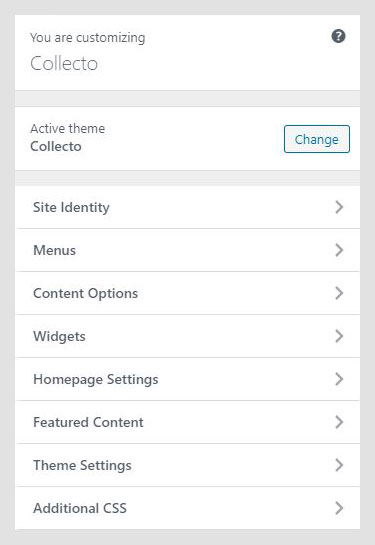
The Customizer allows you to modify theme visuals and settings easily. Here are the customization options in the Collecto theme:
-
<li
Site Identity
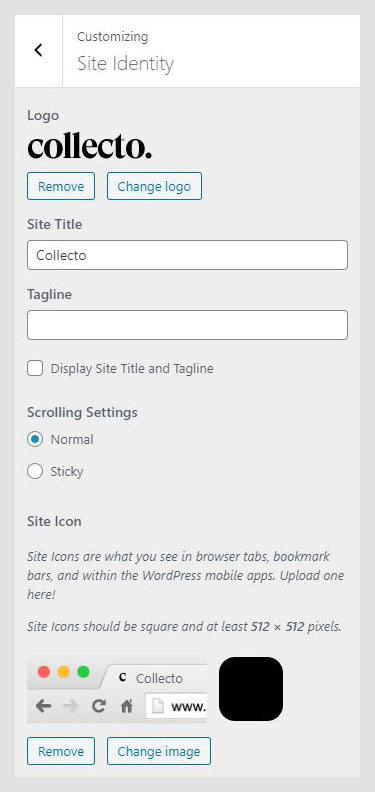
The Site Identity panel in the Collecto WordPress theme documentation is used for setting up basic site identity:
- Logo: Site logo is an image in a .jpg, .jpeg or .png format. Suggested logo image size is 210 x 40px.
- Site Title: The name of your site. Ideal length should not exceed 20 characters. If the site title is longer, it will be displayed in two (or more) lines.
- Tagline: Tagline is a short description of the site, or simply a punchline of your business.
- Title and Tagline Visibility: If Display Site Title and Tagline is checked, both Site Title and Tagline will be displayed.
- Site Icon: Site Icon will be displayed in a browser tab, bookmarks or in the WordPress mobile app. The icon should be squarely-shaped, and the recommended icon size is 512 x 512px.
Menus
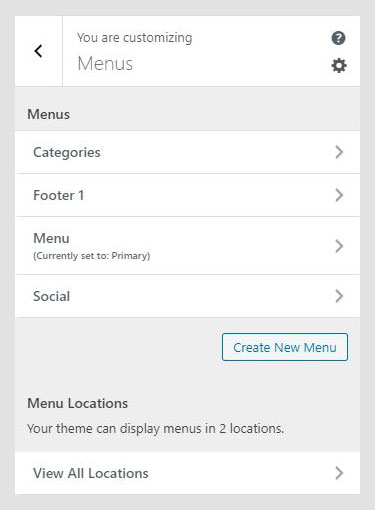
The Customizer menu option allows the user to manage available menu locations, and add and remove menu items. Collecto theme has two menu locations available – the Header menu, which is mostly used for the Primary menu, and the Social menu. Menus can be managed from Appearance -> Menus as well.
Content Options
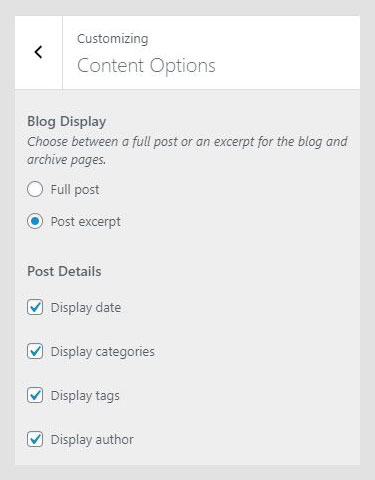
The Content Options panel in the Collecto WordPress theme documentation allows you to control the visibility of posts metadata. By enabling or disabling the options, you can show or hide dates, categories, tags, and the author for all posts. You can also control how the posts will appear on the posts page – with the full content, or just as an excerpt.
Widgets

Widgets are useful extensions for content, which you can add to your sidebar or other widget areas. In the Widgets option in the Customizer, you can see available widgets area in the currently active theme.
Homepage Settings
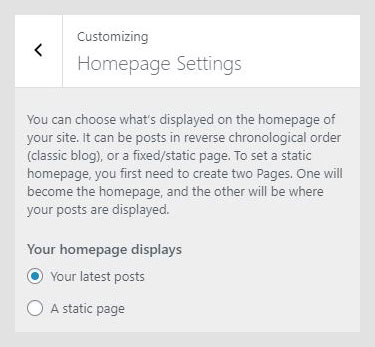
Homepage Settings work the same way Reading settings in Settings -> Reading does. Homepage settings allow you to set the theme to use static homepage, or to display the latest posts.
Featured Content

Featured Content in the. Collecto WordPress theme documentation can be set tag that is used for the posts to display them as the slider on the homepage.
- Tag name: Enter the tag name that you used for the posts you wished to appear on the homepage.
- Do not display the tag in post details and tag clouds: If enabled, the tag used for the slider will not be displayed anywhere.
- Also, display tagged posts outside the Featured Content area: If enabled, the posts tagged with the tag used for the slider will be displayed on all post archives pages.
- Autoplay slider: If enabled, the slider will automatically play slides.
Setting up a slider
To set up the slider:
- Go to Settings -> Reading. Select the homepage to display Your latest posts.
- Go to Posts -> Add New. Create several posts. For each post enter a title, and set a featured image. Tag desired posts with the same tag e.g. Featured. The tag will be used to identify and display desired posts as a slider.
- Finally, go to Appearance -> Customize, and under Home Slider Options -> Slider – Featured Content enter the tag used for the posts.
Theme Settings
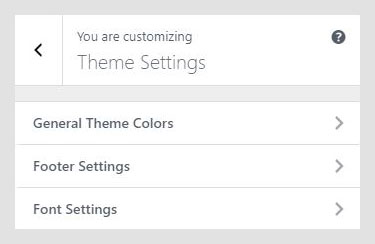
Theme Settings panel contains theme-specific settings. Available options are:
- General Theme Colors
- Footer Settings
- Font Settings
General Theme Colors
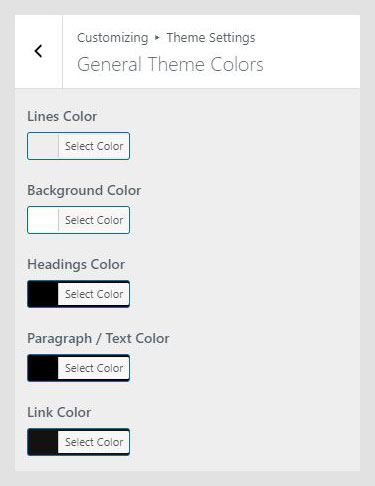
Theme colors are used to add a personal, artistic touch to the site. Lines color setting controls the color of the lines on the homepage. The background color will define the background color on the whole site, while other options are used for text color on the site.
Footer Settings
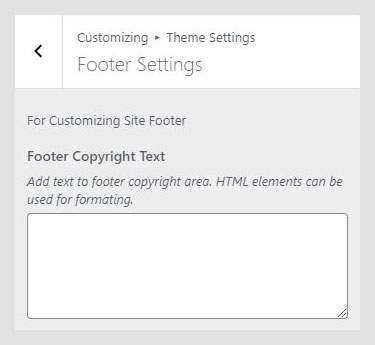
Footer Copyright Text: Text that will be displayed in the footer, as footer credits. You can enter basic HTML elements to create links and stylize footer text.
Font Settings
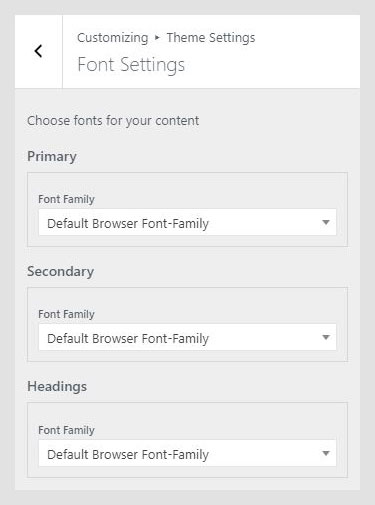
In the Font Settings panel, you can customize what font families will be used for the theme elements.
Additional CSS
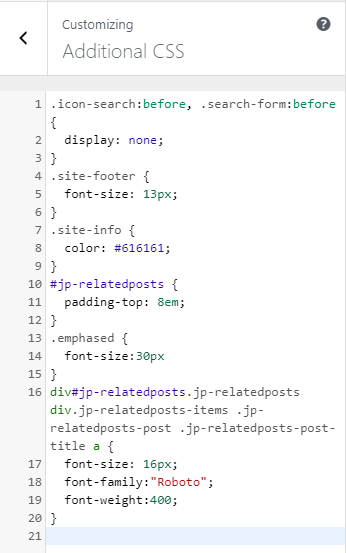
The Additional CSS section in the Collecto WordPress theme documentation is used for custom CSS classes, without interfering with the theme original CSS files, or creating a child theme. These classes are always loaded first, before other stylesheets. In the Useful CSS Classes section, you can find some most used classes.
Collecto WordPress theme documentation, step 5: Useful CSS classes
Modify site title
.site-title a {
font-size: 36px;
font-weight: 700;
}
Modify navigation font size
.main-navigation a {
font-size: 14px;
font-weight: 400;
}
Hide Search icon
.search-button {
display: none;
}
Modify single post title size
.single .entry-title {
font-size: 48px;
}
Reduce spacing between title and the content on a single post
.single-post article .entry-header {
padding-bottom: 60px;
}
